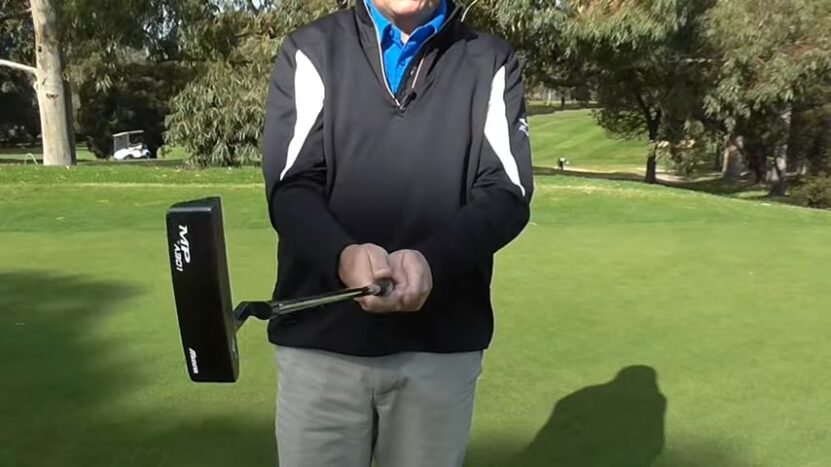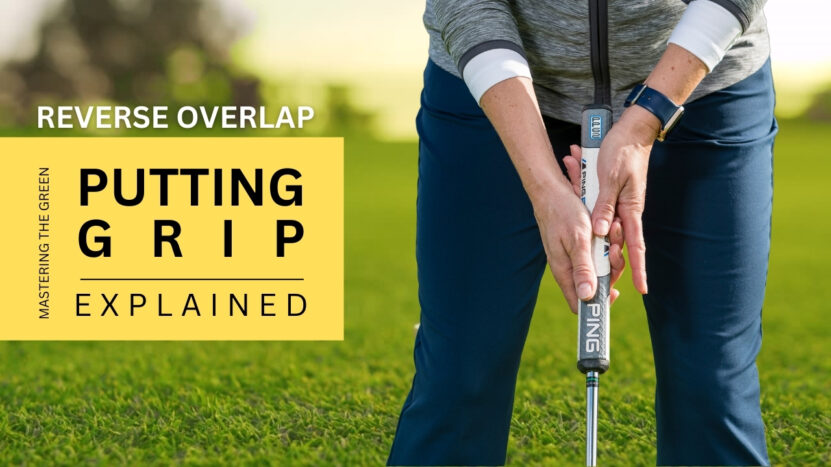When it comes to putting, precision and control are essential. After all, sinking a putt can mean the difference between victory and defeat in a game of golf. One popular technique that has helped golfers worldwide achieve putting success is the reverse overlap putting grip. In this comprehensive guide, we will explore the ins and outs of this grip and help you take your putting game to new heights.
Why Your Grip Matters
The way you grip your putter can directly impact your putting stroke and overall performance on the green. An improper grip can lead to inconsistencies in your stroke, reduced control, and poor accuracy. In contrast, a well-executed grip can provide stability, enhance your feel for the putter, and help you maintain a consistent stroke that delivers results.
The Reverse Overlap Putting Grip: What is it?

It is a variation of the traditional overlap grip. As the name suggests, it involves reversing the overlapping fingers’ positions when holding the putter. This grip is favored by many professional golfers and amateurs alike for its ability to promote consistency, control, and feel in their putting stroke.
Breaking Down: Step by Step
- Hand placement: With your left hand (for right-handed golfers) or right hand (for left-handed golfers) at the top of the putter grip, position it so that it rests in the fingers and not in the palm. The base of your thumb should run parallel to the putter shaft, with your thumb pointing down the shaft.
- The index finger: Extend your index finger down the backside of the grip, keeping it straight and resting against the shaft. This extended finger will provide additional support and control during your putting stroke.
- The right hand: Place your other hand below your lead hand on the grip. It should rest comfortably in your fingers, with the thumb running parallel to the shaft. Your index finger should rest against the back of the putter, just like your lead hand.
- Overlapping the fingers: With your hands in position, bring the pinky finger of your right hand (for right-handed golfers) or left hand (for left-handed golfers) over the index finger of your lead hand. The pinky should rest between the index and middle fingers of your lead hand, creating a secure connection between both hands.
- Finalizing the grip: It should feel secure, with your hands working together as one unit. Your forearms should parallel each other, ensuring a smooth, pendulum-like stroke.
The Benefits
- Improved control: The reverse overlap grip’s finger positioning allows for better control over the putter face, helping to keep it square at impact. This enhanced control can lead to more consistent putts and improved accuracy.
- Reduced wrist movement: The secure connection between your hands minimizes wrist movement, which can be a significant source of inconsistency in putting. Limiting wrist movement encourages a more stable, pendulum-like stroke.
- Better feel: It allows for a better feel and touch on the greens, as it places more emphasis on the fingers rather than the palms. This improved feel can help you gauge the speed and distance of your putts more accurately.
- Consistency: The unique design promotes consistency in your putting stroke. Locking your hands together and keeping your wrists steady, helps you maintain a smooth, consistent stroke that delivers reliable results on the green.
Mastering the Reverse Overlap Putting Grip: Tips and Drills
- Start slow: As with any new skill, it’s essential to start slowly and practice the grip before taking it to the course. Begin by gripping your putter with the reverse overlap technique and making short, slow practice strokes. Focus on the connection between your hands and the feeling of the putter in your fingers.
- Use a mirror: To ensure proper hand placement and alignment, practice it in front of a mirror. This will allow you to visually confirm that your hands are correctly positioned, and your forearms are parallel.
- Develop muscle memory: Repetition is key to ingraining it into your muscle memory. Spend time on the practice green, taking multiple putts with this grip. Over time, it will start to feel more natural, and your confidence will grow.
- Focus on tempo: With the reverse overlap grip promoting a pendulum-like stroke, it’s essential to maintain a consistent tempo throughout your putting motion. Practice various putting drills that emphasize rhythm and tempo, such as the metronome drill or the “tick-tock” drill.
- Evaluate your progress: Regularly assess your putting performance and make adjustments as needed. Are you sinking more putts with the reverse overlap grip? Is your stroke more consistent? Keep track of your progress and make tweaks to your technique as necessary.
The Effect of Grip Size
It can have a significant effect on the effectiveness of the reverse overlap putting grip. The size should be comfortable and provide the golfer with a sense of control over the club. One that is too small can cause the golfer to grip the putter too tightly, leading to tension in the hands and arms, which can affect the putting stroke. A larger one can help reduce tension in the hands and promote a smoother putting stroke.
Golfers should also consider its weight when choosing a size for it. A heavier one can help promote a pendulum-like motion, which is important for consistent putting strokes. It’s important to note that size is a matter of personal preference and can vary based on hand size, pressure, and swing style. Golfers should experiment with different sizes and styles to find the one that works best for them. In addition, golfers should also consider the material of the grip when choosing a size. Ones made of different materials can have different textures and firmness, which can affect pressure and comfort.
The Role of Grip Pressure
This is a crucial element when using the reverse overlap putting grip. Golfers should aim for pressure firm enough to control the club but not so tight that it creates tension in the hands and arms. Using too much pressure can lead to a tense putting stroke and a lack of feel for the putter’s head. This can also cause the golfer to miss putts to the right or left. On the other hand, using too little pressure can result in a lack of control over the club and inconsistent strokes.
One way to achieve the right pressure with it is to grip the club with the fingers rather than the palms of the hands. This allows for lighter pressure while still maintaining control over the club. Another technique is to use a “pressure-free” grip, which involves starting with a light grip pressure and gradually increasing it during the stroke. This can help promote a smooth and consistent putting stroke. It’s also important to maintain consistent grip pressure throughout the stroke, without adding or releasing pressure during the swing.
Similarly, the appropriate grip pressure plays a vital role in achieving consistency and control when using the driver and irons during a golf swing, ensuring a balanced transfer of power and accuracy throughout the shot.
Frequently Asked Questions about the Reverse Overlap Putting Grip

Can I use the reverse overlap grip with any putter style?
Yes, it can be used with any putter style, including blade, mallet, and mid-mallet designs. The key is to find a putter that feels comfortable in your hands and suits your personal preferences.
Is the reverse overlap grip suitable for all skill levels?
It is an excellent choice for golfers of all skill levels, from beginners to professionals. It can help improve consistency, control, and feel in your putting stroke, leading to better performance on the green.
I have large hands. Will the reverse overlap grip still work for me?
Yes, it can be adapted to accommodate golfers with larger hands. You may need to make minor adjustments to the positioning of your fingers to find a comfortable, secure grip.
Can the reverse overlap putting grip help with putting on different green surfaces?
Yes, the reverse overlap putting grip can help with putting on different green surfaces by promoting a consistent and controlled putting stroke.
What is the role of grip pressure in the reverse overlap putting grip?
Grip pressure is crucial in the reverse overlap putting grip for promoting a consistent and controlled putting stroke.
What should I do if I am having difficulty with the reverse overlap putting grip?
If you are having difficulty with it, seek guidance from a golf professional who can help identify and address any swing flaws or areas of improvement.
Can the reverse overlap putting grip improve my putting consistency?
Yes, it can improve putting consistency by promoting a more consistent and controlled putting stroke.
Conclusion
The reverse overlap putting grip is an effective technique that can help golfers of all skill levels improve their putting performance. By promoting a consistent, pendulum-like stroke, this grip can enhance your control, feel, and accuracy on the green. With practice and dedication, you can master the reverse overlap grip and start sinking more putts than ever before. So, grab your putter, head to the practice green, and start perfecting your reverse overlap putting grip today!

